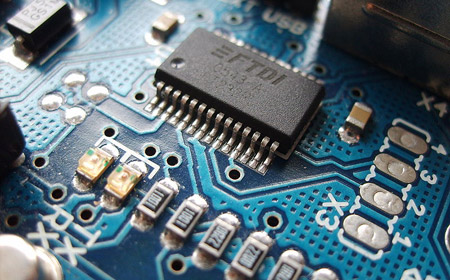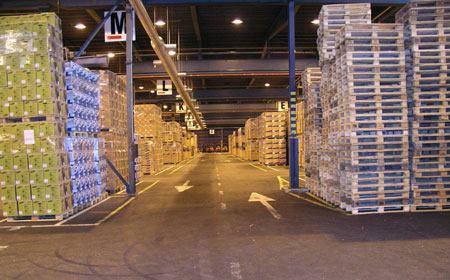July 22-23, 2013
9am – 5pm
Vivere Hotel, Alabang
Fee: Php 20,000.00 / person plus 12% VAT
- Early Registration Payment: Ten-Percent (10%) Discount if PAID thirty (30) days before the training date
- Group Discount: Five-Percent (5%) on Three (3) or More Participants
[tabs slidertype=”left tabs”]
[tabcontainer]
[tabtext] About [/tabtext]
[tabtext] Course Outline [/tabtext]
[tabtext] Facilitator [/tabtext]
[tabtext] Bank Details [/tabtext]
[/tabcontainer]
[tabcontent]
[tab]
Synopsis
Thin film is a basic building block in many engineering products. It is a generic term, which encompasses a wide range of thicknesses depending on its application. In this course, three main topics related to thin film technology will be covered, namely the fundamental concepts of thin film technology, the production of thin film and the integrity of thin film.
The course begins by expounding on the principles of nano- and micro-technology related to thin film. Additional concepts useful for understanding thin film technology such as surface energy, surface structure, surface kinetics and thermodynamics will be briefly introduced. The course will go on to discuss how these concepts are related to the production of thin film.
For thin film production, three processes will be covered i.e. thin film deposition, lithography and etching. The principles, technology and challenges of each process will be briefly discussed. Finally, the course will examine issues related to integrity of thin film such as internal stress and degradation mechanisms.
Course outcomes:
Upon completion of this course, participants will be able to:
- Discuss the basic requirements of a thin film for a specific application.
- Relate concepts of surface energy, surface structure and process to the quality of a thin film.
- List down factors affecting the properties of a thin film.
- Differentiate between physical and chemical vapor deposition techniques.
- Recommend a suitable thin film deposition technique for a specific application.
- Describe detailed procedure of transferring and defining thin-film geometry on a substrate.
- State the challenges of lithography and etching processes.
- Explain degradation mechanisms of a thin film.
- Understand the origin of internal stress and techniques to reduce it.
Who should attend:
- Technicians, engineers, and researchers
- Decision makers, policy makers, and managers
[/tab]
[tab]
Pre-requisite
Basic technical background or working experience in a science or engineering discipline.
Course Outline
- Introduction to thin film technology
- Fundamental of solid state and thin film technology
- Basic concept of vacuum science
- Contamination control and clean room technology
- Thin film deposition: Principle & Technology
- Physical Vapor Deposition Techniques
- Chemical Vapor Deposition Techniques
- Other Techniques
- Lithography: Principle & Technology
- Geometry transfer concept
- Geometry transfer process
- Resolution enhancement technology
- Advanced lithography
- Etching: Principle & Technology
- Geometry defining concept
- Geometry defining process
- Challenges in etching technology
- Integrity of thin film
- Internal stress of thin film
- Degradation mechanisms in metallic thin film
[/tab]
[tab]
DR CHEONG KUAN YEW
Kuan Yew Cheong was born in Ipoh , Perak (1972) and received the B. Eng (1st Hons.) in Materials Engineering from Universiti Sains Malaysia (USM), Malaysia in 1997. After graduation, he worked for two years as a project engineer and quality assurance engineer in a project management company and a semiconductor-device manufacturing factory in Malaysia.
End of 1999, he decided to pursue his postgraduate study (M.Sc.) after being awarded a Fellowship under the Academic Staff Training Scheme from USM. After completion his M.Sc. in Materials Engineering (Thin Film Technology) in 2001, he continued his Ph.D. in the School of Microelectronic Engineering , Griffith University , Australia and the degree was awarded in 2004. This study was fully sponsored by Australian Research Council, USM, and Griffith University Postgraduate Research Scholarship.
In 2005, he was awarded a Certificate of Teaching and Learning from USM. Now he is serving as an Associate Professor at the School of Materials & Mineral Resources Engineering. He is teaching courses of electronic materials, semiconductor fabrication technology, and quality control and management for more than 6 years at under- and post-graduate levels. Dr. Cheong’s main research area is on semiconductor device fabrication, electronic packaging, and characterization. The outcomes of his research have been published in more than 75 high-impact-factor journals and 3 book chapters. Due to his expertise in wide-bandgap semiconductor-based device fabrication technology, for the past six years, he has been invited three times as a Visiting Scientist to Korea Electrotechnology Research Institute (KERI), Korea.
He has also being invited as an Invited Speaker and Keynote Speaker in International Conference on Electronic Materials 2010 (ICEM 2010) – International Union of Materials Research Societies (IUMRS), Korea, CIE & IEM International Seminar on Electrical, Electronic and Energy Saving 2010, Taiwan, and Infineon Technologies (Kulim) Sdn Bhd (IFKM) Technical Symposium 2010, Malaysia. Recently, he has been invited to deliver a Talk on “Investigating Surface Coating and Corrosion Issues Using Surface Analysis (SA) Tools” in Surface Engineering 2011 at Bangkok , Thailand.
He is also a Professional Engineers in Material Engineering disipline who is registered under Board of Engineers, Malaysia.
Outside university, he is very active in professional and community activities. He is a member of Materials Research Society (USA). He was the honorary treasurer for Electron Microscopy Society , Malaysia for year 2005/2006.
Since 2005, he has been elected as one of the Ex-comms of the Institute of Electrical , Electronic Engineers (IEEE) – Component, Package, and Manufacturing Technology (CPMT) Society and Electron Device Society (EDS), Malaysia Chapter.
In addition, he is also the Chairman of the electronic engineering technical division (eETD) under The Institution of Engineers Malaysia (IEM) since 2009. Recently, he has been appointed as a Council Member of IEM and a Standing Committee on Qualification/Admission and Examination/Training.
For the past years, he has involved in organizing a number of local and international conferences and being invited to chair a few technical sessions in those conferences. He is also closely working with Industry through university-industry linkage program and he is delivering technical training courses for local and multinational electronics industries for the past 5 years and more than 350 engineers and researchers have been benefited from those courses.
[/tab]
[tab]
Banco de Oro (BDO)
Account Name: AGUILA GROUP COMPANIES (AGC) DEVELOPMENT CORPORATION
Account Number: (Peso) 00 222 800 0844
Swift Code: BNORPHMM
Bank Address: East Mansion Townhouse, Elisco Road, Sto Rosario, Pateros
[/tab]
[/tabcontent]
[/tabs]











+ There are no comments
Add yours